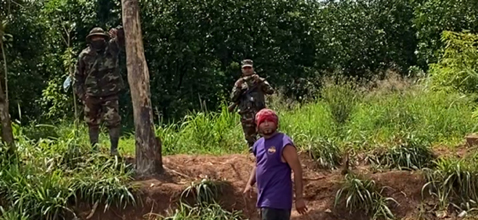
NEAR LOS CHILES, COSTA RICA — Two Nicaraguan soldiers carrying AK-47s motored up on a single scooter and dismounted on their side of the border, a mud road and a downed barbed-wire fence. The sergeant eyed the three young Haitian men and their smuggler, a purple-shirted Nicaraguan named “Felix” who had brought them and a Center for Immigration Studies (CIS) analyst. The camouflage-uniformed soldiers were hardly interested in border security; the Haitians were going to pay them to enter, Felix explained just before their arrival.
“This is the entrance where we have the illegal crossings. Here in Nicaragua, the boys from the Army should be somewhere around here in hiding or in specific places such as this one waiting for the foreigners to cross so that they can get some coinear [money],” he said. “Don’t be scared because nobody’s going to fire on us or anything similar.”
The Nicaraguan soldiers were there as arranged to cash in on a vast new bonanza passing through along an underground railroad that runs from South America, through Panama, and now Costa Rica on up through Mexico. It's congested now with Haitians and people from around the world — a United Nations of illegal immigration — all heading for the American southern border to enjoy its new openness under the administration of President Joe Biden, many immigrants and several smugglers around here say.
After polite introductions, the Nicaraguan army sergeant refused all comment, wagging a finger, and demanded that CIS put down the camera. The young private moved off to one side and readjusted his weapon. After exchanging quiet words with Felix, the smuggler announced that it was now time for everyone to leave. Except for the Haitian men, of course, and the money in their pockets.
For probably $150 each — a full month’s pay for privates — the soldiers would bring up motor bikes for them and then escort them five miles inside Nicaragua to the San Juan River, where civilian confederates of Felix’s would float them over to a highway and deliver them to confederate drivers who would get them up to Honduras, for yet more money.
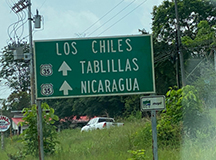
As a waystation, the Los Chiles borderland region of far northern Costa Rica presents an illustrative microcosm of the wider development along the intercontinental trail connecting the world to the U.S. southern border. By all indications, the world route is more congested than at any time in recent memory, with people from Bangladesh, Uzbekistan, Russia, Burkina Faso, Mauritania, Syria, Iraq, Pakistan, Somalia, and dozens of other countries. As will be explained below, this aspect of the U.S. mass migration crisis carries persistently ignored burdens and concerns for the American public, policy-makers, and homeland security agencies that are very distinct from those posed by Central Americans and Mexicans, who occupy center stage.
Escalating Numbers “Since Trump Was Not in Office”
Tallying exactly how many extra-continental immigrants are coming through presents a challenge. Governments at key bottlenecks along the way — Panama, Costa Rica, and Nicaragua, for instance — either ignore the traffic so long as it keeps moving to the next country north or miss much of it since smuggling is an often-successful art of evasion. Some countries may feel a need to undercount their statistics. But a good place to start is with U.S. Customs and Border Protection (CBP) immigrant encounter statistics.
CBP statistics kept for the last 12 years through 2019 (but apparently no longer reported at this level of detail) show that illegal immigrants in this category hail from more than 140 different countries. Migrants in the long-distance flow have always made up a relatively small piece of total illegal immigrant encounters at the southern border, which reached a 25-year apex in May of 180,000.
But that piece has suddenly sprouted high as Central American nations have started to lift pandemic border closure orders and Trump left office, releasing a pent-up wave. The latest CBP encounter statistics released in June show the agency’s encounters of non-Mexican, non-Central American immigrants skyrocketed from 1,308 in May 2020 to more than 40,000 in May 2021. That’s more than 30 times as many, albeit Trump had fully instituted deterring push-back policies in May 2020.
This May’s more than 40,000 non-Central American and non-Mexican illegal immigrants add to a tally of 137,000 for FY 2021 so far.
While the numbers tell much, so do the human smugglers, hoteliers, and business people in the Los Chiles area. They are perhaps as good a barometer of what is happening to the American border as any other measure of trail traffic because they are prospering from it. They also show no inclination toward discretion since international media has bypassed this area and Costa Rica immigration and law enforcement told CIS their interest and resources are limited to occasionally busting significant smugglers.
One not-so-big human smuggler/driver named Luis, who CIS found on a public street trying to sell passage to three Senegalese, said everyone in town had been suffering from the effects of Trump’s deterrence-based border policies, especially the pandemic-related ones where all immigrants were returned to Mexico. This, he said, heavily damaged the local economy. But everyone has been catching up on the money-making “since this president [Joe Biden], and since Trump was not in office,” he said.
“Since Trump left, we started seeing this large horde of people,” Luis explained. “They tell me they’re giving out papers to everyone ... Venezuelans, Cubans — everyone! They say they’re going to the U.S. to work. The border was too tight before.”
“Once there was a time when they collapsed the whole town. There was not one single room here available,” Luis continued. “They were sleeping even at the bus stops, and they even had to take them to the churches.”
It was a great problem for the town to have, hundreds of U.S.-bound immigrants a day: Haitians, Cubans, South Americans, Africans of all stripes, Russians, Uzbeks, Bangladeshis, and Arabs from Iraq and Syria. Everyone’s finally becoming financially whole again, Luis said. He thinks at least 10,000 have come through town since the American election and he’s quite the optimist.
“We’re at something of an ebb right now, but we’re expecting another wave,” Luis said.
How it all moves north is easily seen in this town. Buses or taxis full of migrants pull up from the capital of San Jose four hours to the south, at which they arrived from the Panamanian border.
Los Chiles drivers are waiting for them. Either a driver is waiting by pre-arrangement, or the immigrants allow the drivers to sell them a package. The drivers hit like hungry fish do fresh bait. One female driver who snared three Haitians allowed CIS to follow her load to an unofficial town the locals call La Trocha. The whole town is dedicated to smuggling. She charged $160 for the 40-mile dirt-road ride, then dropped them at a house where 30 other Haitians were waiting to be guided over to Nicaraguan smugglers.
The money may not sound big but, locally, these dollars go a very long way when typical town incomes fall far south of $1,000 a month, especially when paying people are passing through the turnstile like they are now.
Luis charges $20-$50 per head to drive immigrants he fishes from the local bus station to various Nicaragua crossing points. Local guides there charge $10 each to get them to the next hand-off spot inside Nicaragua. Nicaraguan soldiers who can make half a month’s pay on a single immigrant often have to be paid off. River-boat pilots a few miles inside Nicaragua charge $4 to cross and then the immigrants must pay another $100 or $200 to be escorted to the Honduran border.
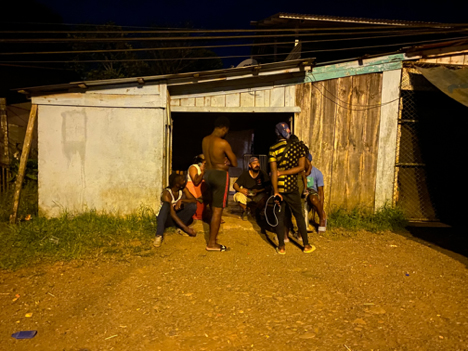
Some arriving immigrants need a day or two to make arrangements. That’s great for the Los Chiles woman who, with her husband, operates a bare-bones hostel near the bus station. It’s often full of immigrants now. One recent night, her facility of bare concrete floors covered by mattresses but offering electricity and hot showers, was at capacity, with Haitians paying $5 each a night. A family friend in the business in northern Panama typically calls ahead to order rooms, telling her how many are coming, the woman explained.
“We’re a small private network,” she said.
She’s perhaps overly optimistic about the future.
“I’m expecting millions of people to come through here,” she said. “We are having much bigger numbers, much, much more! This has really helped the local economy.”
While this information may qualify as anecdotal, it all tracks with on-the-ground reporting by independent journalist Michael Yon, who has spent the last three months in Darien Gap Indian villages calculating how many immigrants were arriving from the Colombian trailheads, where he also spent time reporting.
For context, anywhere from 8,000 to as many as 20,000 immigrants are said to cross through the gap in normal calendar years past. But the International Organization for Migration in April reported that 11,370 extra-continental migrants reached Panama between just January and April. May alone came in at a minimum of 10,000, with the bulk of the year still to come, Yon said.
Why should an average American citizen care about this traffic?
National Security
While the American public is mainly familiar with illegal immigration from Central America and Mexico, the significance of this “extra-continental” flow is that it ferries inherent national security risks from Muslim-majority nations where violent Islamic extremism is rampant. Islamic extremists can and have completed the route, as detailed in my book, America’s Covert Border War: the Nation’s Battle to Prevent Jihadist Infiltration.
One of a relative few Costa Rican immigration busts occurred June 24 over on the western coast. The nation’s elite border patrol arrested 12 Uzbeks along with their Nicaraguan and Costa Rican smugglers. Uzbekistan, of course, is a Muslim-majority nation of consistent U.S. terrorism concern since 9/11. It often exports terrorists around the world, according to The Atlantic.
The immigrants also are coming now from sub-Saharan Africa nations rife with war criminals and brutal tribal militias that commit atrocious human rights violations.
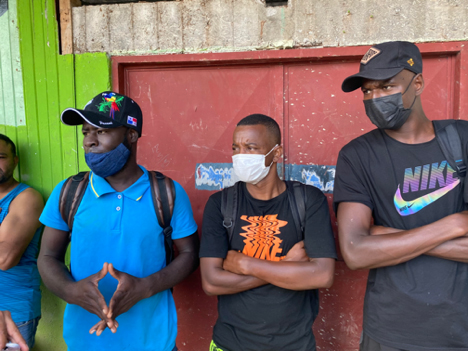
At issue with this species of immigration is that any criminal histories, violent backgrounds, and purported persecution stories are rarely discoverable by U.S. homeland security agencies. Legalizing illegal entry by people from such uniquely lawless nations becomes a public-safety gamble, short of security vetting. Such vetting would determine if immigrants from these places are really the persecuted — as all will claim — or are actually the persecutors.
The odds generally work in favor of infiltrating terrorists and war criminals from these countries — as normal U.S. southern border management systems strain to bear the vastly greater numbers of Spanish-speaking immigrants. Their much greater numbers can camouflage and distract from the security vetting that Americans should reasonably expect.
Here in northern Costa Rica, for instance, CIS met five military-aged Mauritanian men who all said they were en route via illegal smuggling to the U.S. border. According to those who study foreign terrorist groups, significant numbers of Mauritanians are involved in their region’s al Qaeda franchise and other U.S.-designated terrorist organizations.
The Africa Center for Strategic Studies, for instance in this report, noted that “Mauritanians ... represented a disproportionate number of violent extremist ideologues and high-ranking terrorist operatives [and] ... were influential and over-represented” in regional terrorist groups.
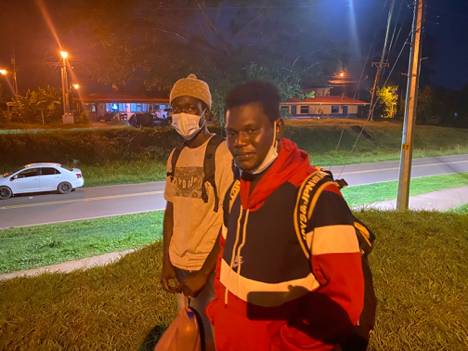
CIS also encountered several military-aged male immigrants from Senegal and was told that immigrants from Ghana were frequent travelers through Costa Rica. These men may well be fleeing terrorists and economic malaise. But they journey at a time when ISIS and other Islamic extremist groups have established significant presences in a vast desert region called the Sahel, which involves those nations.
One recent analysis, for instance, predicts that the expansion of an Al Qaeda network into Senegal and several other countries, such as Burkina Faso, whose citizens have crossed through Costa Rica on the trail, “will increase its ability to target U.S. and European interests in this region and possibly beyond.”
Will anyone in U.S. homeland security during this busy time at the border be available to conduct a thorough security vetting of them all?
U.S. Policies that Kill?
Beyond any security threat these immigrants pose is the root issue of whether President Biden’s new border and immigration policies are causing death and suffering, by powerfully inducing more people, who otherwise would not have undertaken the extremely dangerous trek. For example, many Haitians have cited as a reason for their immigration decisions the Biden administration’s policy of swiftly de facto legalizing family units after they illegally enter the southern border.
A great many of these immigrants are families and pregnant women who have told CIS over recent months that they heard about the Biden policy and hit the trail. But that trail is bedeviled by organized gang rape, murder, violent robbery, extortion, and kidnapping, not to mention death by drowning, exposure, and smuggler abandonment in various wildernesses.

Haitian national Tomas Hubian said the Biden policy was primary in his decision to bring his wife, a nine-year-old boy, and a three-year-old girl from Chile, where they had been comfortably living for five years in security and relative prosperity. He also understood Trump’s policy of returning everyone to Mexico was no more. Securing an upgraded American lifestyle was just too much to pass up when it became so easy, he said, elaborating: “My friends said, ‘If you have kids now, we have a high chance of getting through. You can be escorted through if you have kids,’” Hubian said, after buying sandals for the three-year-old at a Los Chiles grocery. “Before, we would have been put back in Mexico and lost our money,” meaning the thousands in smuggling fees necessary to get anywhere.
CIS counted dozens of pregnant Haitian women and very young children who made it through the notoriously deadly Darien Gap jungle on foot and were now in Costa Rica preparing to hand themselves over to often unscrupulous smugglers, soldiers, and officials. All had been living comfortable lives for years already in Chile or Brazil, far from desperate or threatened.
Many of those who survived the Biden-induced trek through the Darien Gap to get here described bodies they saw all along the trail. One Cuban who made it through the gap to Costa Rica said he counted “at least” 15 rotting bodies in a gorge along the way, including pregnant women and some children.
Two of many questions that certainly warrant answers for American human rights organizations, lawmakers on both sides of the aisle, and immigrant advocacy groups are: How many of the dead would be alive today had they not answered the Biden administration’s siren calls to enter illegally, and how many more will die in the coming years responding to the administration’s new gate-opening practices?
